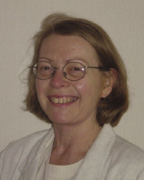Historic buildings are being hit with a triple whammy: added insulation, smaller heating systems, and air conditioning. These changes inevitably affect how moisture migrates, increasing the risk of damage to historic fabric. Hygrothermal modeling, appropriately used, is one tool to understand and manage these changes.
Early masonry walls were porous and leaky but survived because air movement and internal heat could dry the wall in a short wet-dry cycle. Mechanical systems, added to provide thermal comfort for occupants and moisture stability for artifacts, often unintentionally drive interior moisture through porous materials and any available cracks. Insulation and vapor barriers, intended to conserve energy and control moisture, are difficult to install without gaps in existing buildings. Too much insulation can reduce the ability of exterior brick to stay warm in winter or dry out between storms. A cold wall will stay wet longer, be saturated deeper, and be vulnerable to freeze-thaw damage. The International Panel on Climate Change (IPCC) reports that wind driven rain events are expected to continue to increase in severity and duration, increasing the depth and duration of wet masonry.
Predicting the migration of moisture through modeling
The "dew-point method" predicts where condensation will occur in a wall assembly based on the exterior and interior temperatures, and the R value of each layer. However this system only considers the thermal resistance of the materials and wall assembly at a point in time.
Wärme und Feuchte instationär (WUFI), or "transient heat and moisture transfer," is a suite of dynamic modeling tools developed by Fraunhofer Institute in Germany to predict how moisture will move through a wall over time based on a specific combination of exterior weather, internal temperature and humidity, and the wall construction. Unlike earlier models, WUFI considers the impact of material porosity and wall cavities on vapor migration, absorption, capillary action, condensation, and drying time. This information is invaluable in finding the right balance between conservation of heat and energy, and the protection of historic masonry and wood structures.
Although a WUFI analysis is valuable, there are limitations. It is a model, not a field test of actual conditions. The more accurate the input data, the more accurate the results will be. As with energy models, WUFI can compare assemblies but not predict absolute performance. It requires an experienced eye to understand the variables and level of accuracy. The user must have expert knowledge of the software and its underlying assumptions and a strong understanding of the physical properties of materials in order to make valid assumptions and judgments, evaluate and apply the program results, and convey those results to the designer.
Susan Pranger, AIA, LEED AP BD+C is a senior architect at Vidaris, Inc., New York, N.Y.
Tags:
Moisture mischief: Using Wärme und Feuchte instationär (WUFI) to predict its next move
October 21, 2014 - Construction Design & Engineering









.png)